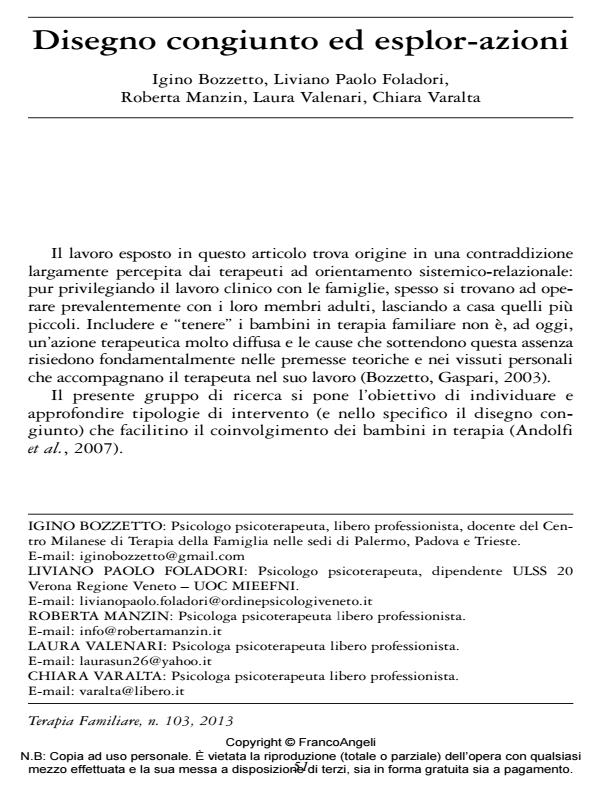Disegno congiunto ed esplor-azioni
Journal title TERAPIA FAMILIARE
Author/s Igino Bozzetto, Liviano Paolo Foladori, Roberta Manzin, Laura Valenari, Chiara Varalta
Publishing Year 2014 Issue 2013/103
Language Italian Pages 24 P. 51-74 File size 187 KB
DOI 10.3280/TF2013-103004
DOI is like a bar code for intellectual property: to have more infomation
click here
Below, you can see the article first page
If you want to buy this article in PDF format, you can do it, following the instructions to buy download credits

FrancoAngeli is member of Publishers International Linking Association, Inc (PILA), a not-for-profit association which run the CrossRef service enabling links to and from online scholarly content.
This essay comes from the need to get children more involved in family-therapy sessions. The authors introduce conjoint drawing as one of the instruments that allow an active participation of all the family members and of the children in particular, thanks to its simultaneous participation that facilitates the emerging of new meanings. The theoretic frame which the authors are referring to CMM (Coordinated Management of Meaning) considers communication an interactive process in which the subjects can change and exchange meanings in a recursive action involving different hierarchical levels of interaction. The authors place, in an episodic context, the conjoint drawing and they describe its usage in three different situations (public, private, a center for child protection). The experiences are compared and analyzed considering pragmatic, semantic and emotional aspects. The authors reflect on the fact that the various communicative levels involved are always active in the therapeutic process and they have to be considered as coordinates enriching clinical maps related to feelings, emotions and meanings much more complex and systemic as much shared by all family members.
Keywords: Child, conjoint drawing, family, therapy, CMM, meanings
Igino Bozzetto, Liviano Paolo Foladori, Roberta Manzin, Laura Valenari, Chiara Varalta, Disegno congiunto ed esplor-azioni in "TERAPIA FAMILIARE" 103/2013, pp 51-74, DOI: 10.3280/TF2013-103004